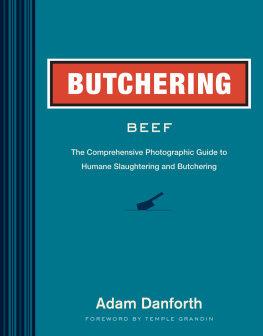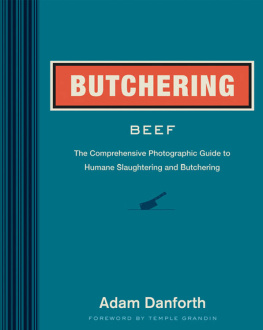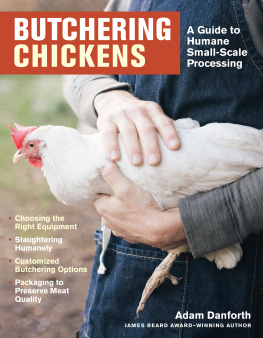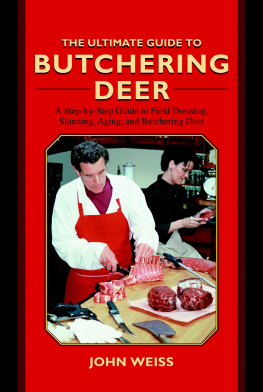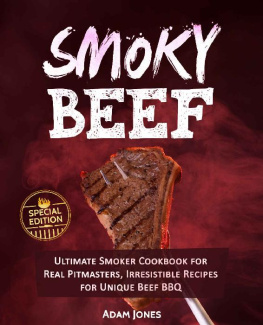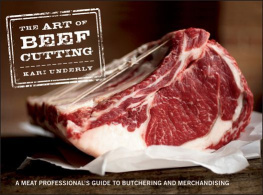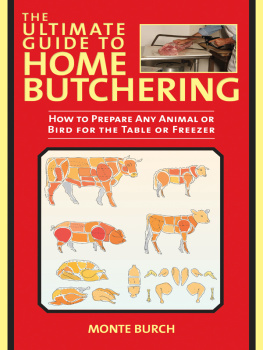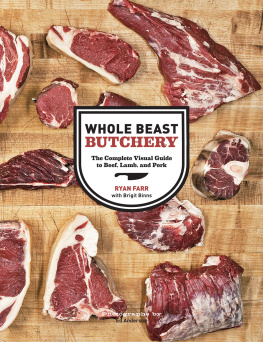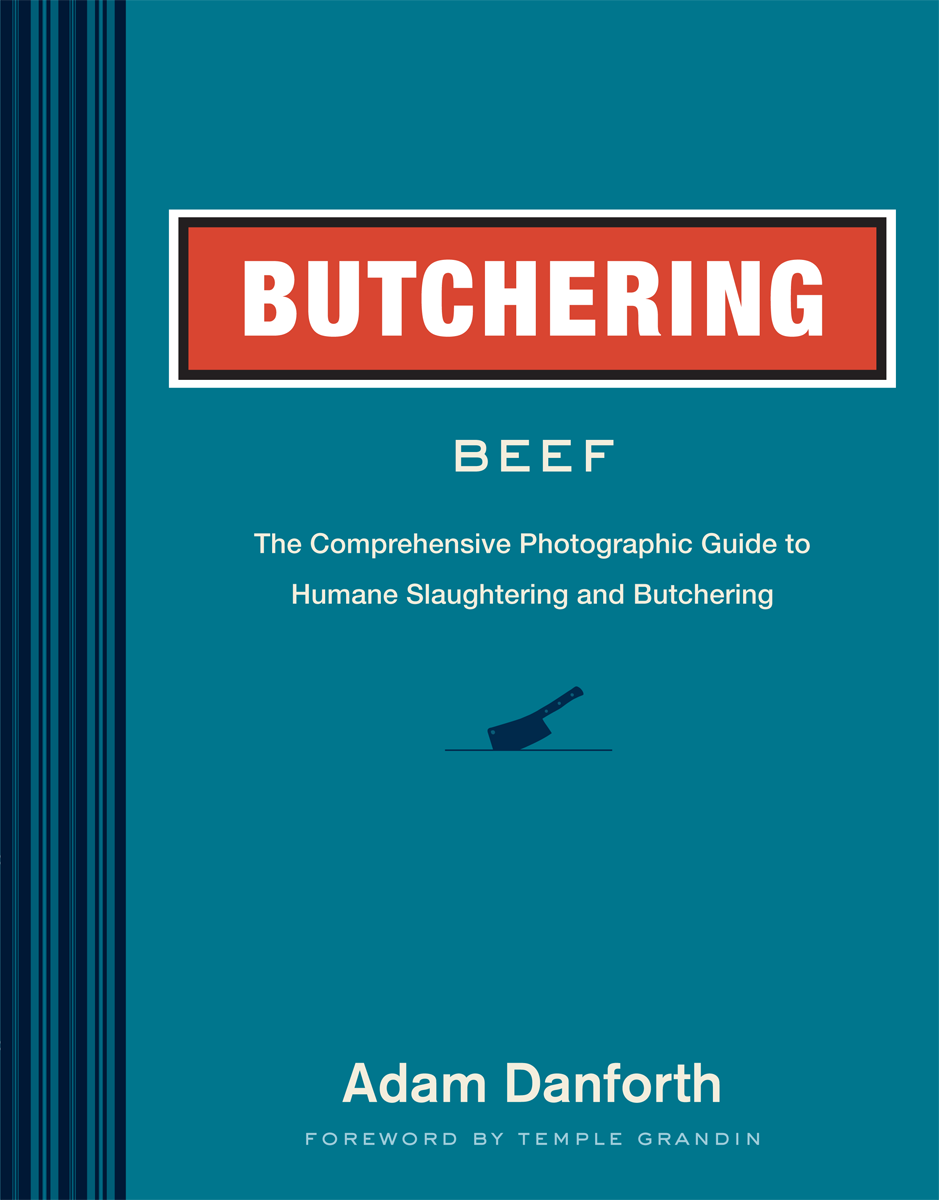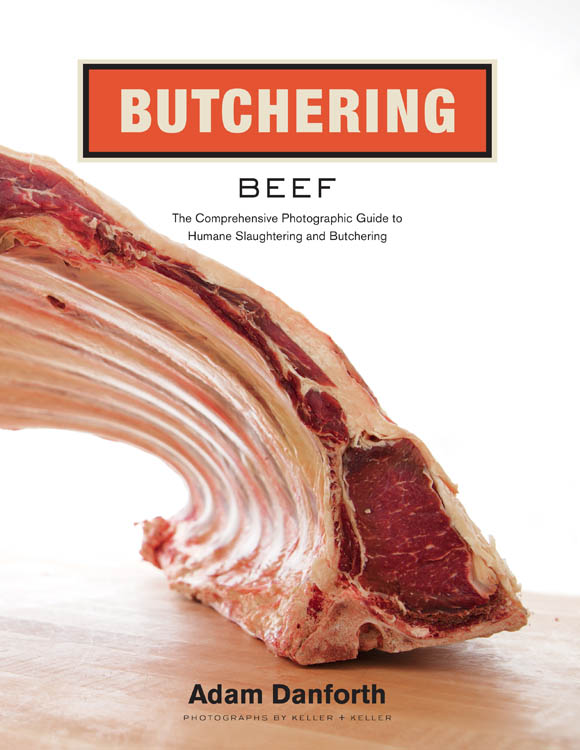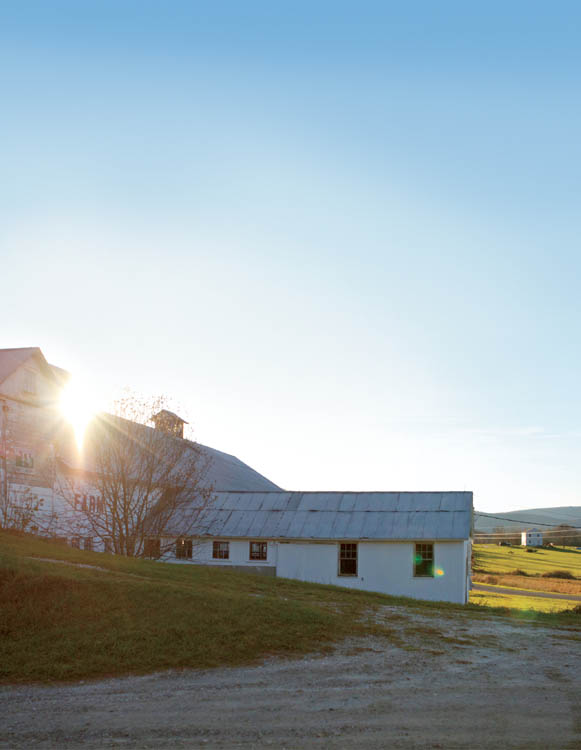dedication
For Mom, who fostered my love of food.
Contents
Foreword by Temple Grandin
Because of my work designing systems for humane slaughter, people often ask me about the ethics of eating meat. Early in my career, I thought about this constantly. One day I was standing on a catwalk overlooking pens of cattle that were going to die in the equipment I had designed. A flash of insight went through my mind: All the cattle that are going to be processed in this meat plant would have never existed if people had not bred and raised them. They would have never lived at all.
If we are going to raise animals for meat, however, we owe them a decent life and a respectful death. The Farm Animal Welfare Council in the United Kingdom has stated that an animal raised for food should have a life worth living. Cattle should have access to open land, clean water, and good food. When we harvest an animal for food, its death should be quick, painless, and stress free.
One advantage to butchering on the farm is that all the stress associated with transport and handling in a strange place can be avoided. An animal that dies when it is completely relaxed will provide the best meat; excitement, fear, and agitation that occur at the time of slaughter can toughen beef. Long-term stresses such as long transit time or cattle fighting before slaughter may cause dark cutting beef, a severe quality defect which raises pH and causes the meat to have a shorter shelf life.
There is a growing interest in small-scale processing of beef animals partially because people are interested in maintaining control over the quality of their meat. Unfortunately, there's relatively little information that is appropriate for people operating at this level, especially those who are slaughtering for the first time. Butchering Beef by Adam Danforth provides easy-to-follow step-by-step instructions for people raising their own livestock to humanely slaughter a beef animal and butcher it with good food safety practices.
I remember vividly the day I killed my first steer. I had difficulty admitting to myself that I had actually done it. Even for experienced processors, though, killing should never become too easy. Taking the life of an animal should always be approached with respect. Many cultures have slaughter rituals because they recognize that killing an animal is not the same as, for example, harvesting grain. Every animal we raise for food should have a life worth living, and every time we kill an animal it is our responsibility to provide a humane and painless death.
Temple Grandin, author of Humane Livestock Handling and Animals in Translation
Humane Slaughtering Reminders
- For both animal welfare and meat quality, it is essential that your beef animal be rendered unconscious instantly with a single shot from either a rifle or a captive bolt gun. Some people use feed to keep the animal still; while the animal is eating its favorite food, it is shot.
- Be sure to use a caliber of firearm or captive bolt that is appropriate for the size animal you will be slaughtering. A common mistake is to use a firearm or captive bolt that is too small. A .22 long rifle is the minimum required for calves, steers, and heifers. A rifle, due to spiral rifling of the barrel, will provide greater velocity (hitting power) compared to a pistol. Shotguns armed with slugs are preferred by many people. Bulls or bison require heavier firearms.
- If a firearm is used, the muzzle of the gun must be held a minimum of two or three inches away from the forehead.
- More powerful captive bolt guns are expensive but they are also more effective. If a captive bolt is used, I strongly recommend buying a high-quality gun from Bunzl-Koch Suppliers. A captive bolt must be held perpendicular to the animals forehead.
- Captive bolt guns must be cared for the same way as the finest hunting rifle. After each use, they must be completely cleaned.
- Cartridges for both captive bolts and firearms should be stored in a dry place. Damp cartridges may cause a captive bolt to lose hitting power.
- For more helpful information, consult the guidelines of the American Meat Institute, American Veterinary Medical Association, the American Association of Bovine Practitioners, or grandin.com. TG
Introduction
There is no better location to harvest an animal than the land on which it lives. Youre present with the animal, in a calm, familiar environment, during its final moments. Natural surroundings reinforce the normalcy of one animals sacrifice for anothers existence. Earth cushions the hard fall of a stunned animal, preventing bruising. Blood fertilizes the field.
Honorable harvesting prioritizes the well-being of the animal; the process resembles nothing of the horror stories and horrific realities coming from inside improperly operated abattoirs or industrial-size slaughterhouses. When Im harvesting an animal, I feel right knowing that I have done everything I can to ensure a natural (albeit domesticated) existence and painless departure for any animal I process. This book will provide you with the same assurances.
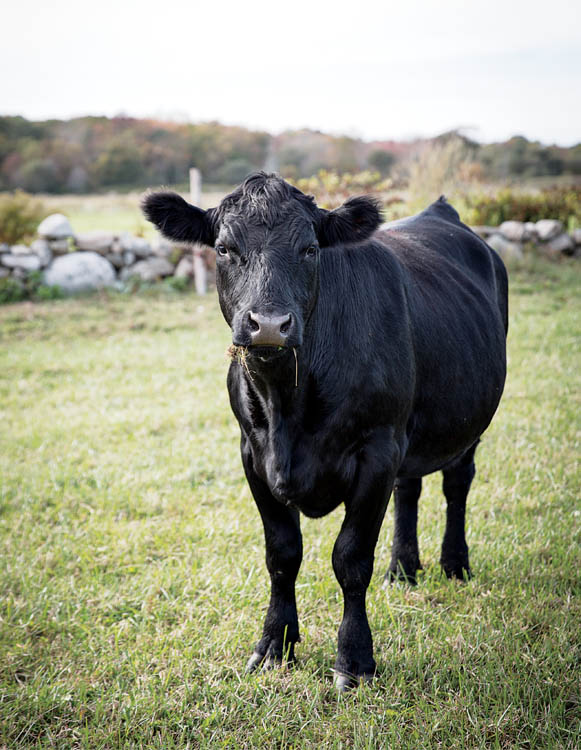
Slaughtering an animal is not for everyone, and trepidation when beginning an education in this kind of work is to be expected. In fact, I would encourage it. A bit of uncertainty will make you slow down and will encourage you to deeply consider the importance of what is about to happen. Speed is for the machines. Act with intent and go slowly. Remember: preventing mistakes by practicing often and working with precision will increase efficiency more than working quickly will. At home there is no need to rush, either in raising the animal or in harvesting it. Slow growth yields a more flavorful meat, and cautious processing yields a nourishing product.
For people raising animals for their own consumption and for those looking to purchase and process animals that have been raised locally, this book is the key to your food freedom. Everything you need to know in order to successfully and respectfully slaughter the most common species found on a farm is contained in these pages.
Youll learn exactly how to prepare animals for slaughter, how to set up a slaughtering and butchering area, how to select the tools and equipment youll need to ensure a successful slaughter, and, most importantly, how to stun and bleed animals with the certainty that they are experiencing the least pain and discomfort in these final moments of their lives.
Ensuring the animals well-being during the slaughtering process isnt just about the ethics of humane animal handling; its also about producing quality meat. Chapter 1, which focuses on meat science, explains exactly why providing better care, and slaughtering with respect, produces the best quality meat. When aberrations occur an unsuccessful stun, punctured viscera, or damaged meat there is comfort in knowing that you did what you could to avoid them. The slaughtering methods in this book focus on ensuring the animal is insensible to pain, not only for the animals well-being but also for your own.

